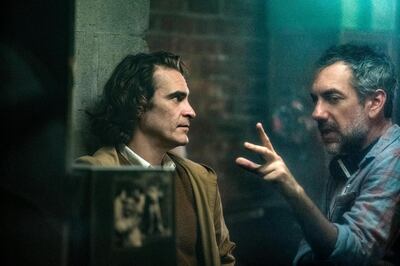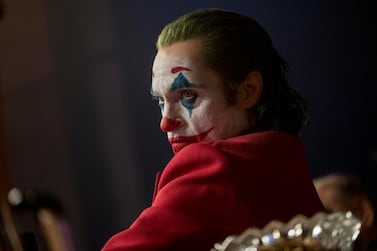"I'd like to say I grew up studying great Renaissance paintings," smiles Todd Phillips, "but I grew up watching movies and learning from movies and being inspired movies." Born in Brooklyn in 1970 by and raised in the era of New Hollywood, when young directors such as Martin Scorsese, Brian De Palma and Francis Ford Coppola were cutting their teeth, Phillips's influences have most certainly found their way into his latest – and arguably greatest – film, Joker.
A gritty and intense spin on the origins of Batman's arch enemy, "the impetus for it was to try and do a deep-dive character study in the vein of the films I grew up loving", explains Phillips. "It's a harder thing to push through the studio system nowadays, to get a movie like that made, where you can get a great actor and really, really do some intense character study. I thought: 'Maybe you could get it made if you made it about one of these comic book things that seem to be all the rage.'"
Given how beholden Hollywood currently is to the comic-book genre, it's sensible thinking. So was choosing the Joker. From Cesar Romero's camp turn in the 1960s Batman TV show to Jack Nicholson's cartoonish portrayal in Tim Burton's Batman (1989), Heath Ledger's Oscar-winning effort in Christopher Nolan's The Dark Knight (2008) and Jared Leto's ghoulish incarnation in the lamentable Suicide Squad (2016), the villain endures. But Phillips wanted to filter his backstory through "as realistic a lens as possible".

He and co-writer Scott Silver penned the role of Arthur Fleck, a sad-sack professional clown who ultimately transforms into the Joker, with Joaquin Phoenix in mind. The actor admits to having initial reservations. "There was something that felt fresh, exciting and terrifying about it," he says. "It was quite an experience reading through the script. I had so many different feelings about the character, and they kept changing. I wasn't sure where I stood with them. And there was something very unsettling about that."
Review: Todd Phillips’s ‘Joker’ changes the face of the popular character
Much has been made of the film's nods to Scorsese's Taxi Driver and The King of Comedy, references that are inevitably magnified by the casting of Robert De Niro – the star of both – as Murray Franklin, a TV chat-show host that would-be stand-up comic Arthur fantasises about meeting. Yet, as Phillips points out, Sidney Lumet's Network and Dog Day Afternoon and Milos Forman's One Flew Over the Cuckoo's Nest – three other key films from the era – are just as influential.
Curiously, though, the biggest reference point was a 1928 silent movie, The Man Who Laughs, about a young man who has a permanent smile carved into his face to symbolise his father's treachery. "What The Man Who Laughs really explored was the idea of laughter through pain, which is deeply embedded in this film," says Phillips, who appropriately enough has spent his Hollywood career working in comedies such as The Hangover, Old School and Due Date.

Phoenix's preparation took him in a different direction. He watched videos of those afflicted with the pseudobulbar affect, a condition causing involuntary fits of laughter and tears, something we see in Arthur. Also working with choreographer Michael Arnold, he studied movement, resulting in a hugely physical performance. "It seemed like it might be an interesting way to show the transformation; the change that he goes through from Arthur to Joker," says Phoenix.
As Phillips points out, “One of the first things we spoke about when we met was [that] Arthur has music in him. Music in him implies he has grace and I think there is a grace in him that doesn’t really come out until he becomes Joker.” Indeed, it was music that saved the film. For a key bathroom scene, where Arthur is dyeing his hair green, the director was stuck. “There are 200 crew people waiting outside the bathroom,” recalls Phillips, “and we had no idea what we were going to shoot.”
He then played Phoenix some music from Hildur Gudnadottir's score, which – unusually – had been written before a frame of the movie was shot. Phoenix immediately started moving his body in front of the mirror in what can only be described as a bizarre tai-chi style interpretative dance. "I was really responding to the music," he says. "That bathroom scene was such a transformative moment, not only for the character but for us. We discovered a way of working."
Their collaboration remained fluid. Another key scene, which takes place on the subway, was changed radically on the day. “There were many scenes we shot that way,” says Phoenix. “It never felt like we were just showing up and hitting marks.” No wonder the film, which won the Golden Lion at the Venice Film Festival last month, was greeted with an eight-minute standing ovation when it premiered. Sometimes, you just have to applaud the blood, sweat and tears.
Joker is in UAE cinemas from Thursday, October 3






